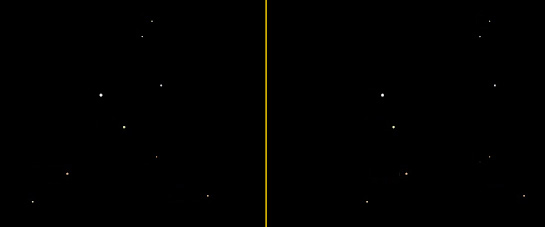_(45192016582).jpg) |
| Photo by VillageHero (CC) |
A thread on the Cloudy Nights forum got me thinking about light pollution and the future of amateur astronomy, especially the visual astronomy that I love so much. I can only say for certain that amateur astronomy, for those whom circumstances allow, will still be an enjoyable hobby in the future in some form or another.
Based on trends I'm seeing now from my limited point of view, cheap Electronically Assisted Astronomy (EAA), or some semblance of it, will likely be the mainstream portal for new amateur astronomers or casual hobbyists until the next big thing comes along. We're almost there already. EAA is the use of a camera in lieu of an eyepiece at the telescope to capture and view images in near real time. It has recently become more affordable with the introduction of the Seestar S50 Smart Telescope, which is often paired with a tablet on a tripod for viewing its images. While still hindered by light pollution, these telescopes can cut through much of it, making for satisfying imaging even in light polluted areas.
People want to create something to share on social media, not just look at stuff. Who creates astro images and doesn't share them online? Here I am sharing material on visual observing because I can't share the actual views themselves, other than describing them in words or sketches. Social validation is huge in our society, probably always has been, and I don't see that changing.
I think most astro-imaging will be done from the comfort of home using data obtained in the backyard, from remote telescopes, and from data shared online (like Hubble data). Why drive way out, freeze in the cold, set up equipment, etc. when it will no longer be necessary?
Will light pollution still be an issue for amateur astronomers? I think it will likely only be a pressing issue for a shrinking group of visual astronomers. Imagers, who used to be the biggest proponents of keeping the sky and observing field dark, now can obtain and process fantastic images from horribly light polluted locations, like this one from someone's backyard in Washington, DC. They can reject frames ruined by light, satellites, planes, clouds, etc. Sure, dark skies are better, but are no longer essential to create great deep-sky images. Visual observers have no such recourse.
At our public and club-only star parties, imagers are now the ones with bright unshielded screens, along with those with EAA setups, because dark adaptation no longer matters to them. At the latest public event, a young girl asked me, "Why do you ban white lights and pass out red filter material for our phones when you all have your bright white screens on?" I couldn't answer her.
In the foreseeable future, I think a few visual observers will be the only amateur astronomers with the self-interest to fight light pollution, and it may be mainly wildlife enthusiasts that take up the torch (see what I did there). I think most visual observers will just drive (or move) somewhere darker, or observe the bright planets, the Moon, the Sun, and double stars at or closer to home. That's what I do now.


















































